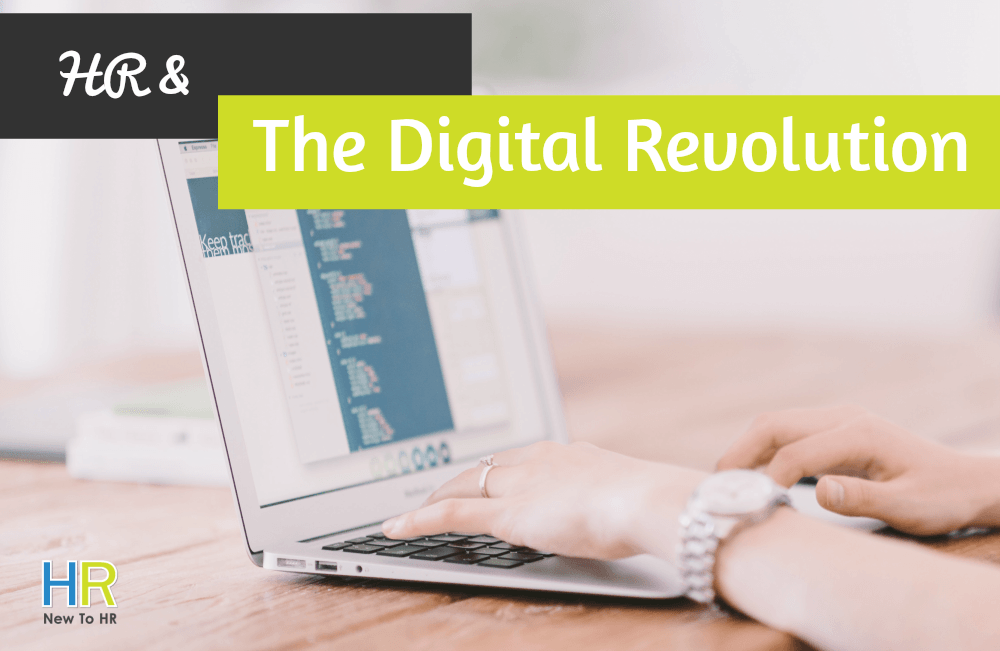
HR And The Digital Revolution
The digital revolution has had an impact on everyone, but in a field which has historically been all about people – Human Resources – the integration of technology has presented unique challenges.
That is not to say people operations are all Luddites in disguise – far from it: moving into the digital age has helped some HR leaders to become better at what they do, but there is a real sense that some employees, departments and even organisations will become irrelevant unless they adapt – and quickly.
This blog post looks at the benefits the digital revolution is bringing into the world of HR; the inevitable problems that it is causing and the adaptations – both in mindset and process – that are necessary for HR people and the companies they work for to move ahead.
Big Data and other Benefits
Ask someone in HR to search for an employee record a decade ago and they would probably scurry over to a filing cabinet or cluttered shelf and start rummaging through paper folders and dog-eared files. Do the same today, and they are more likely to fire up a PC, tap in a few commands and retrieve a digital document. Remote workers might even connect in via their tablet or smartphone and have more or less instant access to the information they need.
This clearly has its benefits and few would argue that a computer network will outprocess a human every time when it comes to storing, categorising and retrieving information. Speed of function is a key component of efficiency and, for that reason alone, the digital revolution has improved the working of businesses across the globe.
The invention of tools and processes for managing, directing and manipulating this huge reservoir of digital information has led to the birth of 'Big Data' which is now a key component of every HR department, used for everything from sickness monitoring and employee appraisals to recruitment profiling.
The advent of cloud computing has introduce another sea change in the world of business. This one is more controversial, especially in the area of security and data protection, but the benefits are obvious: remotely hosted and upgraded software means leaner and more affordable in-house IT while global back-up of data enables both robust data storage and the opportunity for remote access, freeing up employees from the inefficiency of commuting.
So much for the positives…
Getting To Grips With HR Technology - Online Course
The Danger of Digital Disarray
However, when the precision of the digital world intersects with the real world of overworked and underslept employees, psychological power structures and political agendas – the effect can be chaotic.
For any kind of new tool or process, digital or otherwise, to be integrated into an established workplace all parties need to be completely clear about what's going on and why, and there needs to be careful organisation of the transition.
Employees and their managers need to understand:
- How the new piece of software or equipment works
- How existing processes will need to change to accommodate the new tool – what will need adding and what must be dropped?
- What the business is looking to achieve as a result of the new tool and process
- How achievement is to be measured
In many organisations, even the first two requirements are given scant attention while the last two are seen as the concern of senior management. This can result in imperfect technology being foisted on confused and unprepared employees breeding resentment and inefficiency.
Risks, Reorganisation and Recruitment
So the digital revolution is not something that can just happen by osmosis. It requires the active participation of both leaders and employees to change the way businesses operate on a fundamental level. At least three key areas can be identified as important areas of focus as we move deeper into the digital age.
First, businesses require a new attitude to risk.
Software and systems are evolving at a fantastic pace and it is no longer possible to fully assess the costs and benefits of a digital project from the outset. Successful businesses have caught onto this and have realised that implementing a digital project in its embryonic ‘beta’ stages has major advantages: costs are considerably lower and the business has a big say in how the project develops.
The iterative processes of modern systems design brings in a project much like a plane coming in to land on a runwayand while there may be a few circles on the approach, the old conservative businesses risk the plane not landing at all. Employees need to adapt to this uncertainty too, and managers can help them by valuing their experience and feedback. After all, it is on the shop floor that the technology will live or die.
This touches on the second area of change: reorganisation.
In order to make the most of the digital revolution with its ongoing development, top-down control needs to be relaxed and more power delegated to people frther down the pecking order. There is a trend towards ‘flat’ organisations rather than a traditional hierarchy, breaking down those age-old power structures and giving employees a voice and a key role in managing change.
Finally, there needs to be a significant shift in the area of recruitment.
Not only does a digital workplace require a whole new set of skills, but the means of reaching out to prospective employees needs to change. Forward-thinking businesses are turning to social media channels to build a new digitally literate workforce, eschewing traditional cvs and application forms in favour of more dynamic, skills-based recruitment. In the process they are finding that the costs of hiring are plummeting with expensive ad-based campaigns replaced by low-cost – and sometimes free – digital alternatives.
From this blog post it should become clear that the digital revolution is not an project but an ongoing process – and one that is showing no signs of abating. But humans are still very much a part of the process and our next post will look more closely at what it is to be a human in this new age of the machine, and why the human touch matters.
© New To HR


